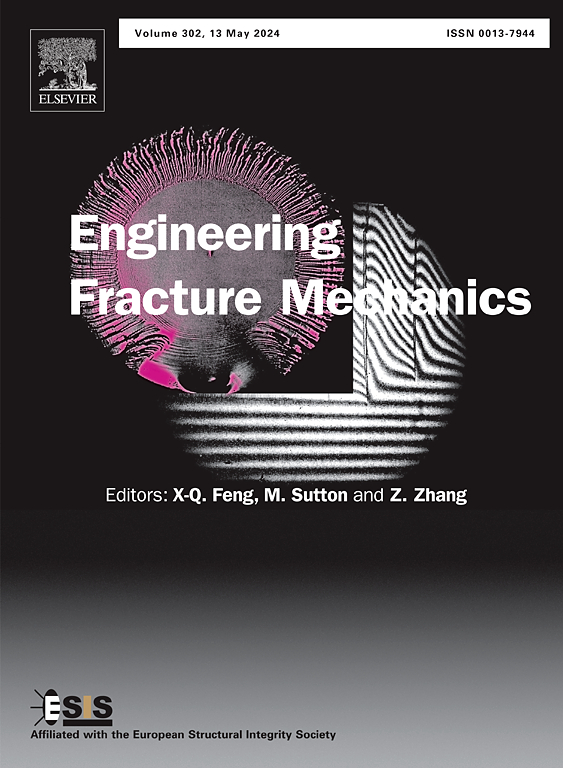Atomic scale analysis of cracking behavior at the triple junctions based on molecular dynamics simulations
IF 4.7
2区 工程技术
Q1 MECHANICS
引用次数: 0
Abstract
Triple junctions play important role in the deformation and fracture of polycrystalline metals. Due to the difference in the crystalline orientations of the composing grains, high stress concentration exists at the triple junctions, affecting the mechanical behavior of the materials. In order to explore the propagation behavior of an intergranular crack at the triple junctions, the evolutions of initially intergranular cracks at the triple junctions are investigated using a series of molecular dynamics simulations. The results show that the geometric parameters of triple junctions have important influences on the propagation mode of the initially intergranular crack. There exist four cracking modes, i.e., blunting, GB sliding, transgranular cracking, and intergranular cracking, among which the GB sliding mode has the best fracture resistance. Moreover, the triple junction geometry also has a strong effect on the crack propagation path and characters, resulting in distinctive ductile or brittle crack propagation characters. It is found that the crack propagation path gradually transits from intergranular cracking to transgranular cracking with the increase of grain boundary inclination angle from parallel to perpendicular with the crack. Also, the crack propagation character changes from ductile to brittle as the crystal orientation of the grain ahead of the crack gradually increases from 0 to 90 degrees. This work provides a unique insight for the understanding of fracture of nanocrystalline metals.
求助全文
约1分钟内获得全文
求助全文
来源期刊
CiteScore
8.70
自引率
13.00%
发文量
606
审稿时长
74 days
期刊介绍:
EFM covers a broad range of topics in fracture mechanics to be of interest and use to both researchers and practitioners. Contributions are welcome which address the fracture behavior of conventional engineering material systems as well as newly emerging material systems. Contributions on developments in the areas of mechanics and materials science strongly related to fracture mechanics are also welcome. Papers on fatigue are welcome if they treat the fatigue process using the methods of fracture mechanics.

 求助内容:
求助内容: 应助结果提醒方式:
应助结果提醒方式:


